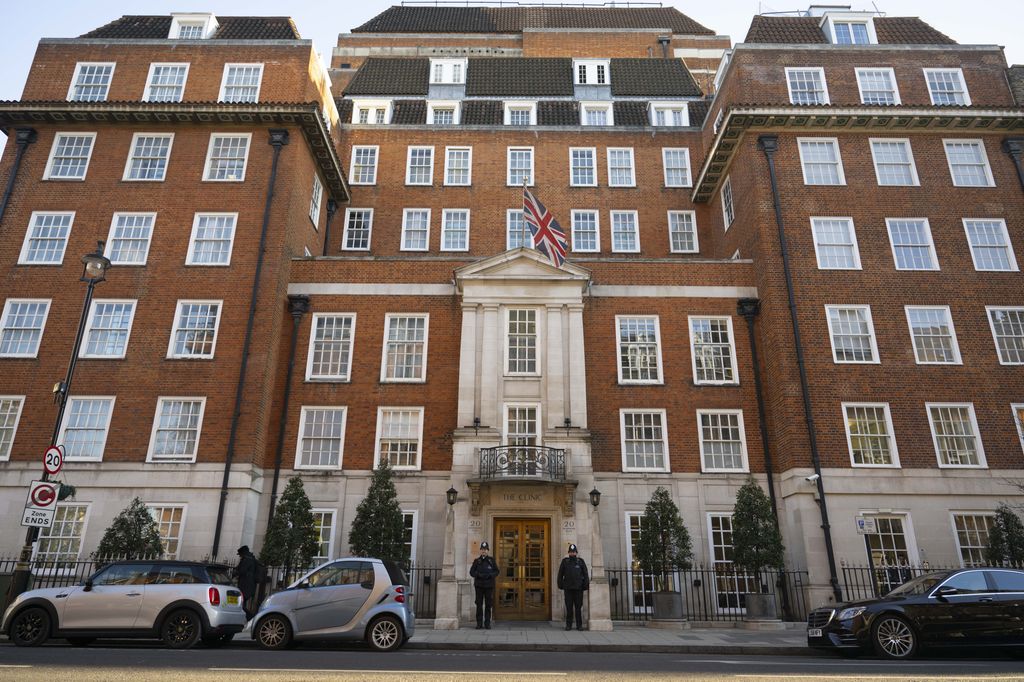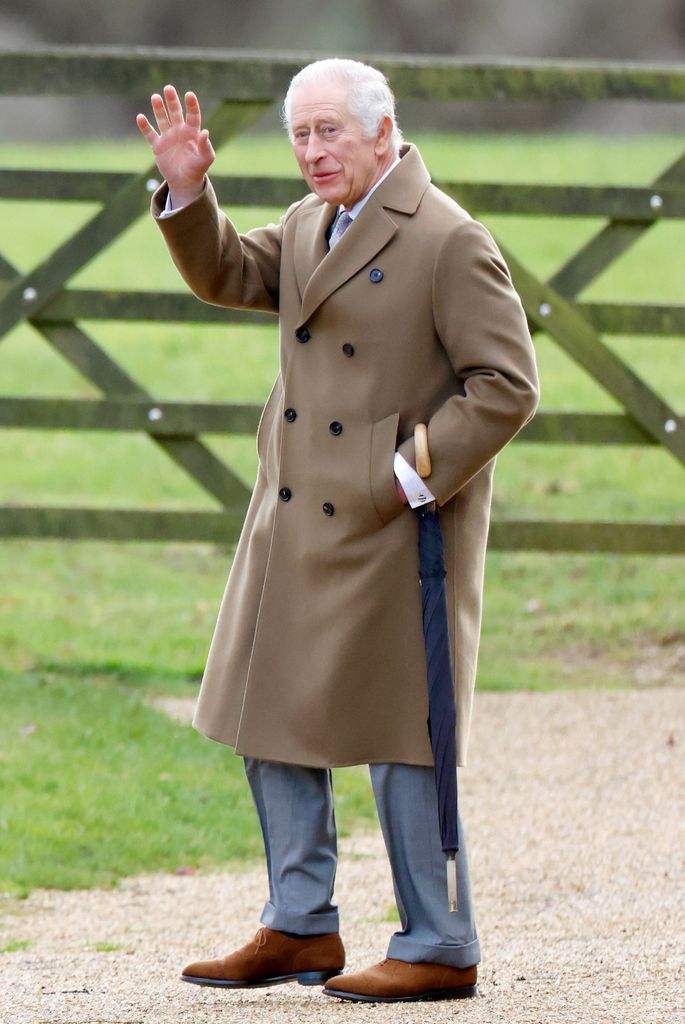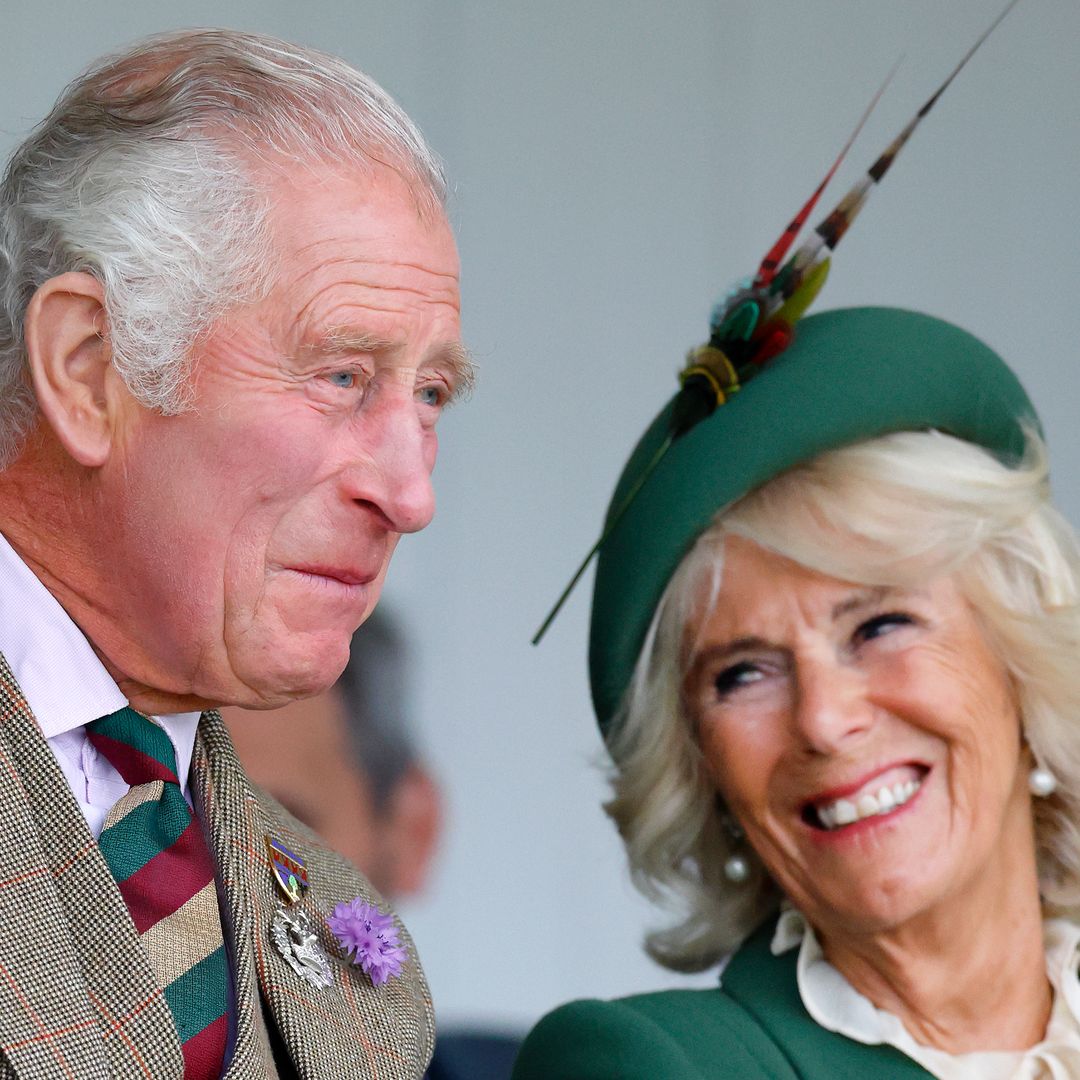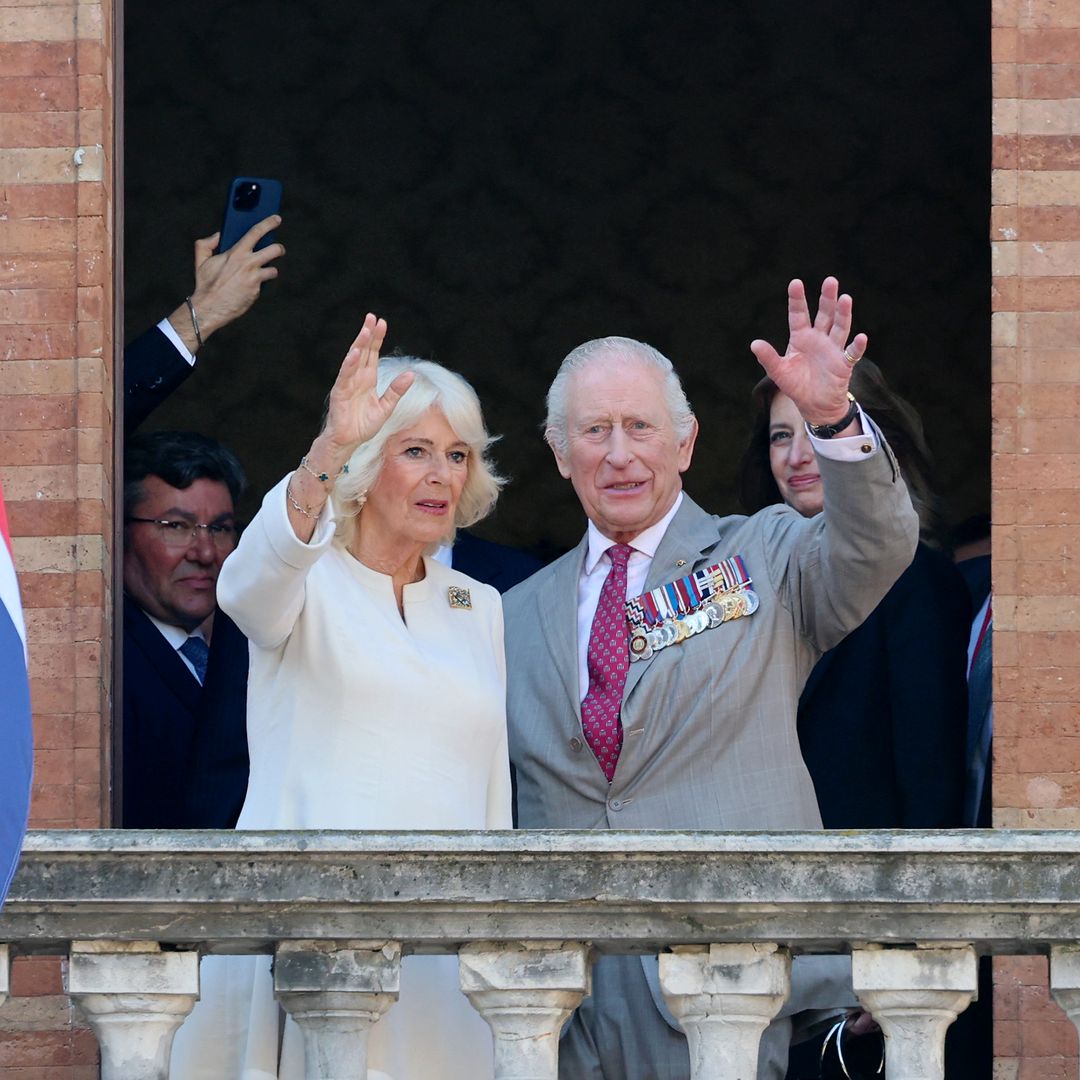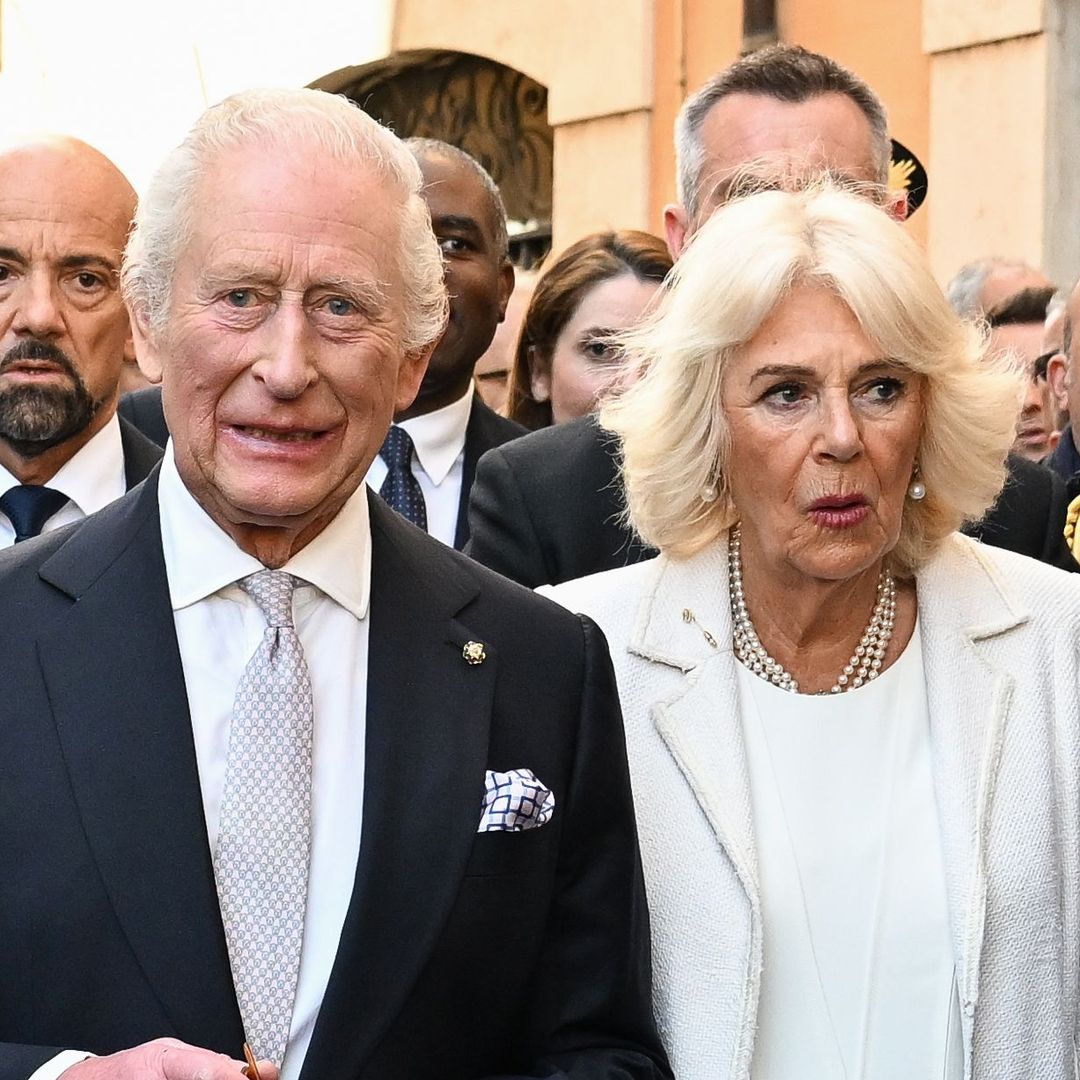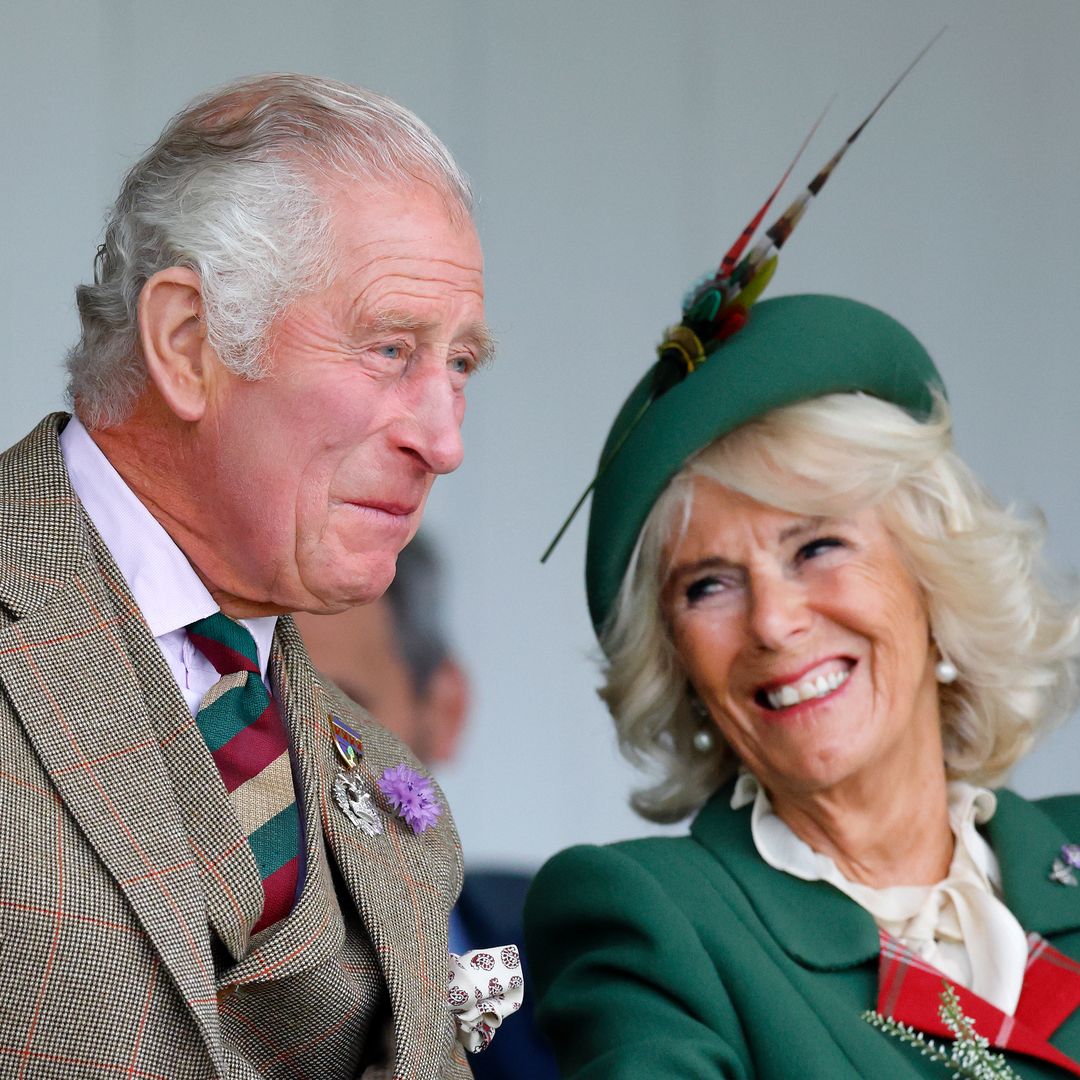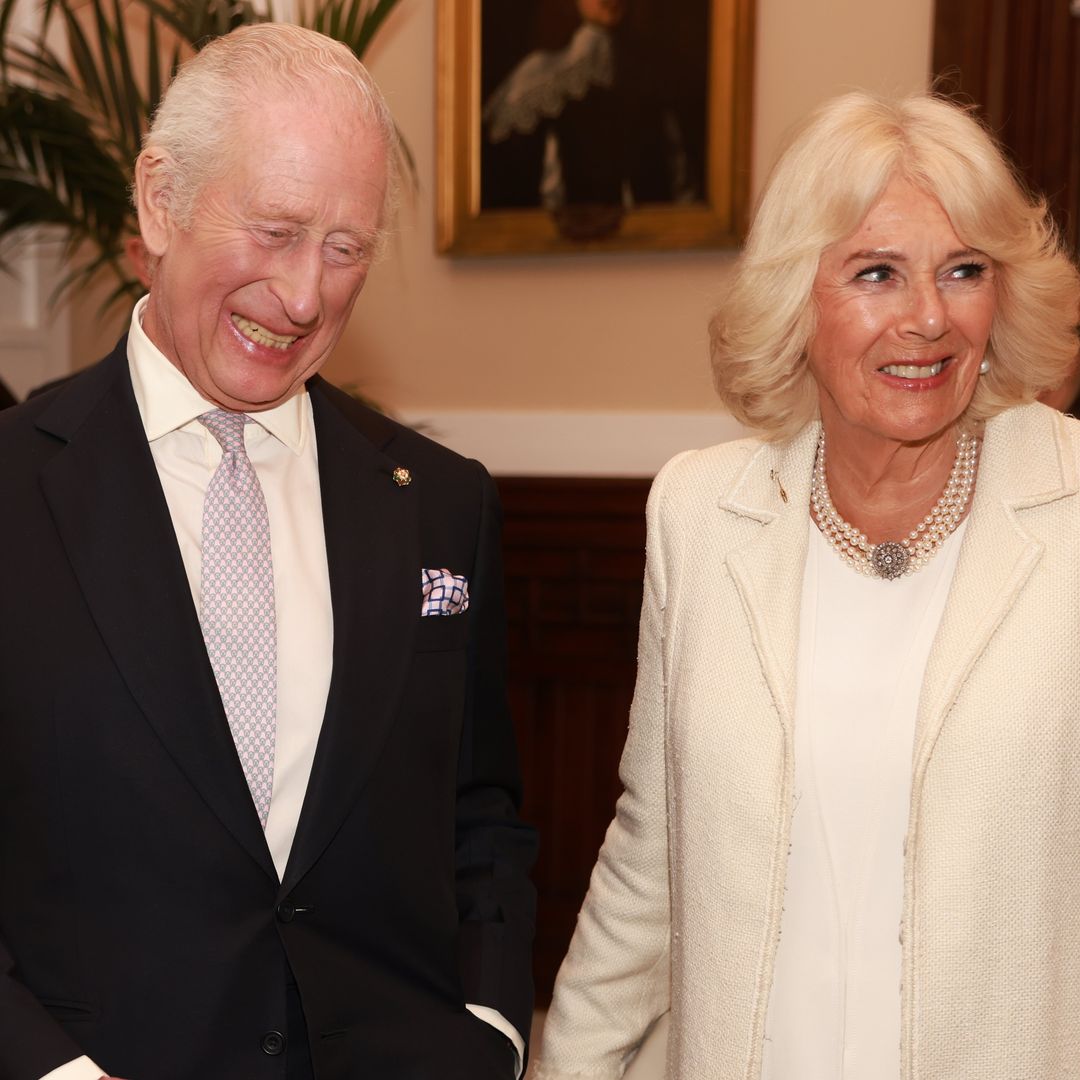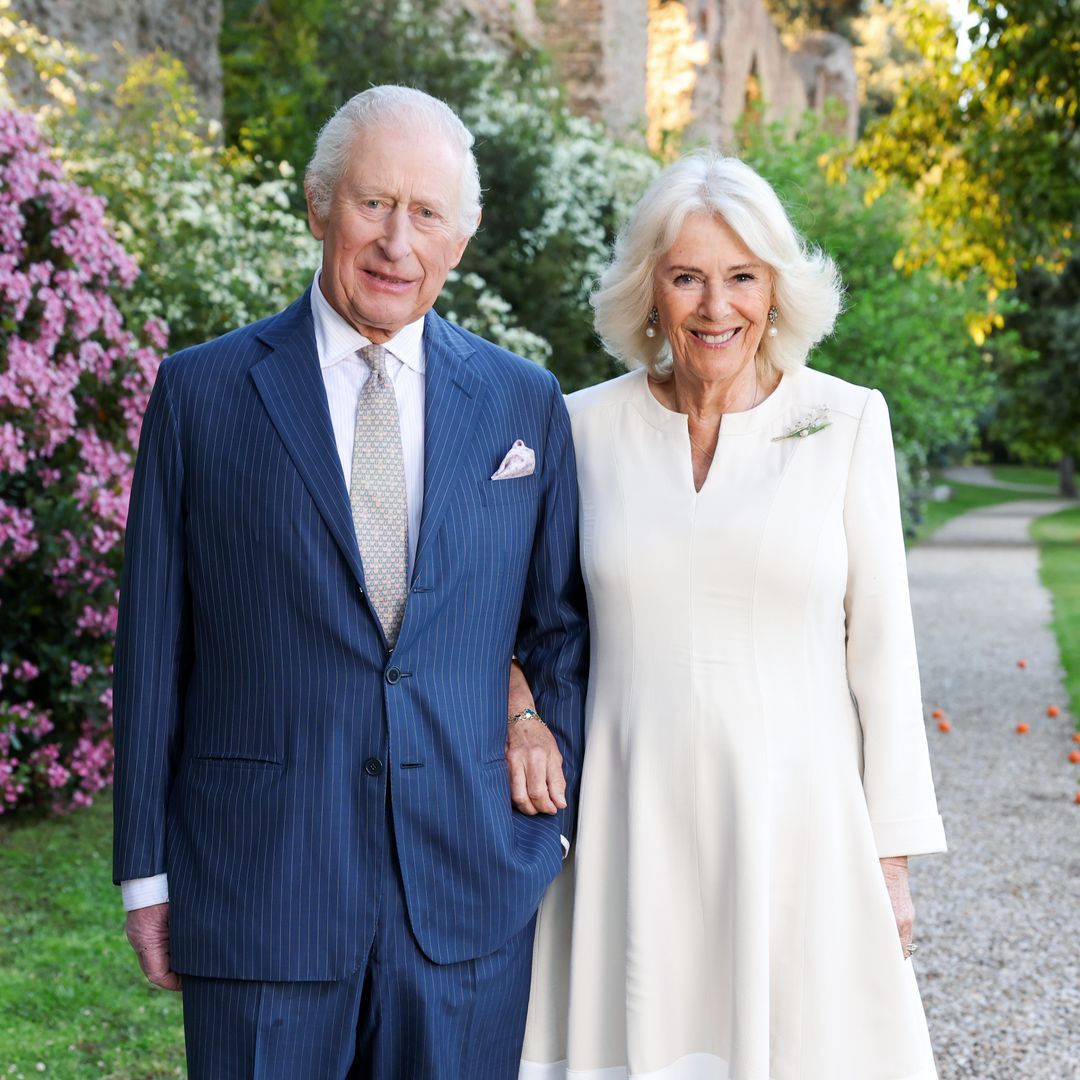Queen Camilla smiled as she was seen exiting the hospital where King Charles is being treated for an enlarged prostate and where the Princess of Wales is recovering after abdominal surgery.
The Queen, 76, did not answer any questions as she got into the back seat of a waiting car at 3.10pm on Friday.
Earlier in the day, Charles and Camilla were seen arriving at the private London Clinic and it's understood the pair visited the King's daughter-in-law Kate, who is on the 11th day of her hospital stay after undergoing a successful major operation last week.
In a statement, Buckingham Palace said: "The King was this morning admitted to a London hospital for scheduled treatment. His Majesty would like to thank all those who have sent their good wishes over the past week and is delighted to learn that his diagnosis is having a positive impact on public health awareness."
It comes after the King, 75, was returned to Clarence House on Thursday, after previously spending some time at his Sandringham estate in Norfolk.
His wife, Queen Camilla previously said Charles is "fine" and looking forward to getting back to work.
Charles was diagnosed with the benign condition on January 17 while staying at Birkhall in Scotland, after going for a check-up because he was experiencing symptoms.
He is understood to have wanted to share the news to encourage other men to get themselves checked.
Charles has postponed a number of engagements on doctor's advice. The news came the same day as Kensington Palace confirmed that the Princess of Wales had undergone abdominal surgery.
Kate, 42, remains in The London Clinic and is not expected to carry out official engagements until after Easter, with the Prince of Wales also clearing his diary of official duties for the time being.
What treatment could King Charles have had for an enlarged prostate?
Surgery is usually only recommended for moderate to severe symptoms that have not responded to medicine, the NHS website says.
Treatment can include a number of procedures, including removing part of the prostate gland with a laser, water ablation using the pressure of the water to destroy prostate tissue, or urethral lift implants, which hold the enlarged prostate away from the urethra so it is not blocked.
Other options include a prostate artery embolisation, during which tiny plastic particles are injected into blood vessels to shrink the prostate gland by reducing its blood supply.
LISTEN: Why King Charles is the ‘happiest’ he has been despite royal dramas



